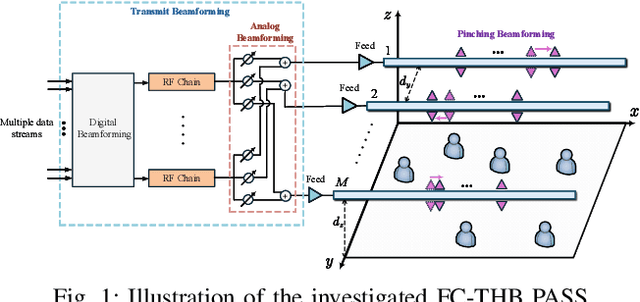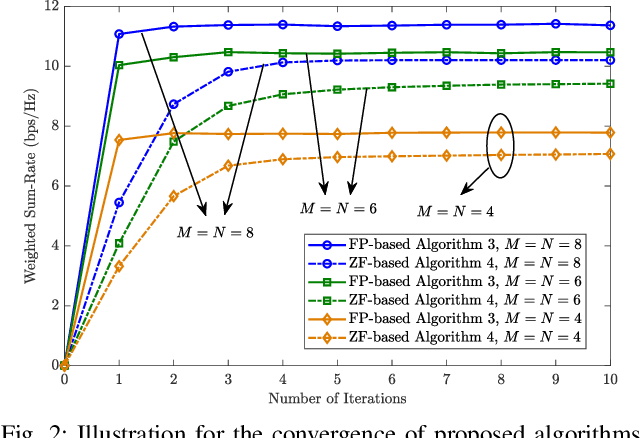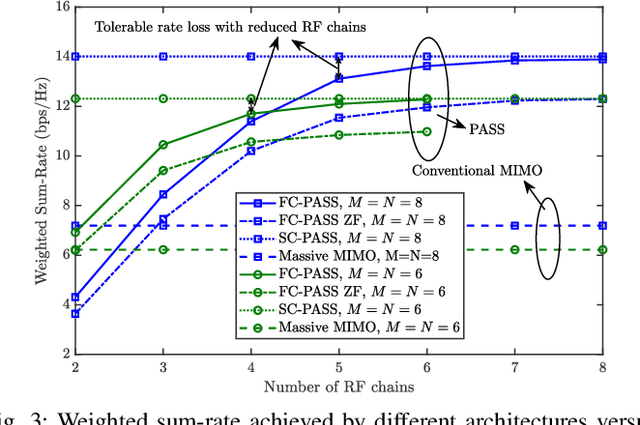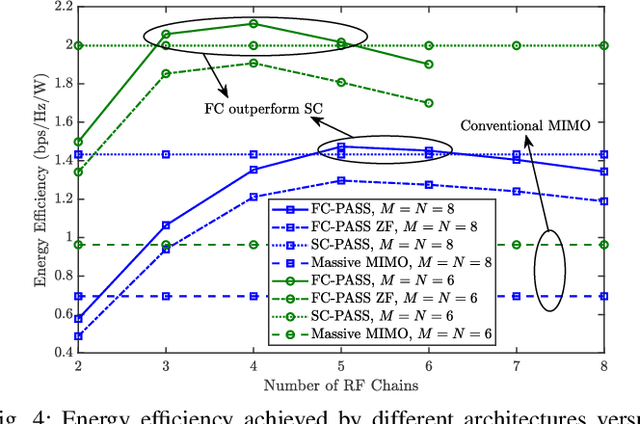Hyundong Shin
Multiconnectivity for SAGIN: Current Trends, Challenges, AI-driven Solutions, and Opportunities
Dec 25, 2025Abstract:Space-air-ground-integrated network (SAGIN)-enabled multiconnectivity (MC) is emerging as a key enabler for next-generation networks, enabling users to simultaneously utilize multiple links across multi-layer non-terrestrial networks (NTN) and multi-radio access technology (multi-RAT) terrestrial networks (TN). However, the heterogeneity of TN and NTN introduces complex architectural challenges that complicate MC implementation. Specifically, the diversity of link types, spanning air-to-air, air-to-space, space-to-space, space-to-ground, and ground-to-ground communications, renders optimal resource allocation highly complex. Recent advancements in reinforcement learning (RL) and agentic artificial intelligence (AI) have shown remarkable effectiveness in optimal decision-making in complex and dynamic environments. In this paper, we review the current developments in SAGIN-enabled MC and outline the key challenges associated with its implementation. We further highlight the transformative potential of AI-driven approaches for resource optimization in a heterogeneous SAGIN environment. To this end, we present a case study on resource allocation optimization enabled by agentic RL for SAGIN-enabled MC involving diverse radio access technologies (RATs). Results show that learning-based methods can effectively handle complex scenarios and substantially enhance network performance in terms of latency and capacity while incurring a moderate increase in power consumption as an acceptable tradeoff. Finally, open research problems and future directions are presented to realize efficient SAGIN-enabled MC.
Anti-Malicious ISAC: How to Jointly Monitor and Disrupt Your Foes?
Dec 22, 2025Abstract:Integrated sensing and communication (ISAC) systems are key enablers of future networks but raise significant security concerns. In this realm, the emergence of malicious ISAC systems has amplified the need for authorized parties to legitimately monitor suspicious communication links and protect legitimate targets from potential detection or exploitation by malicious foes. In this paper, we propose a new wireless proactive monitoring paradigm, where a legitimate monitor intercepts a suspicious communication link while performing cognitive jamming to enhance the monitoring success probability (MSP) and simultaneously safeguard the target. To this end, we derive closed-form expressions of the signal-to-interference-plus-noise-ratio (SINR) at the user (UE), sensing access points (S-APs), and an approximating expression of the SINR at the proactive monitor. Moreover, we propose an optimization technique under which the legitimate monitor minimizes the success detection probability (SDP) of the legitimate target, by optimizing the jamming power allocation over both communication and sensing channels subject to total power constraints and monitoring performance requirement. To enhance the monitor's longevity and reduce the risk of detection by malicious ISAC systems, we further propose an adaptive power allocation scheme aimed at minimizing the total transmit power at the monitor while meeting a pre-selected sensing SINR threshold and ensuring successful monitoring. Our numerical results show that the proposed algorithm significantly compromises the sensing and communication performance of malicious ISAC.
Fundamental Limits of Localization with Fluid Antenna Systems: A Fisher Information Analysis
Dec 15, 2025Abstract:In this letter, we investigate the fundamental limits of localization in fluid antenna systems (FAS) utilizing a Fisher-information-theoretic framework. We develop a unified model to quantify the localization information extractable from time-of-arrival (ToA) and angle-of-arrival (AoA) measurements, explicitly capturing the synthetic aperture effects induced by FAS. Closed-form expressions are derived for the equivalent Fisher information matrix (EFIM) and the corresponding positioning error bound (PEB) in both user-side and base-station (BS)-side FAS configurations. Also, we propose optimal port-selection strategies based on greedy algorithms and convex relaxation to maximize the information gain under a constrained number of activated ports. Numerical results demonstrate that the proposed port-selection schemes can substantially tighten the PEB compared with random activation, thereby confirming the strong potential of FAS to enable high-precision localization. These results offer analytical insights and practical design guidelines for FAS-aided positioning in future-generation wireless networks
Tri-Hybrid Beamforming Design for Fully-Connected Pinching Antenna Systems
Nov 18, 2025



Abstract:A novel fully-connected (FC) tri-hybrid beamforming (THB) architecture is proposed for pinching antenna systems (PASS). In contrast to conventional sub-connected (SC) PASS, the proposed FC architecture employs a tunable phase-shifter network to interconnect all radio frequency (RF) chains with all waveguides. This facilitates a THB framework that integrates conventional hybrid analog-digital beamforming with pinching beamforming. A weighted sum-rate (WSR) optimization problem is then formulated to jointly optimize the transmit beamformers and pinching antenna (PA) positions. Two algorithms are developed to address this challenging non-convex problem. 1) Fractional programming (FP)-based algorithm: This algorithm directly maximizes the WSR using an FP-based alternating optimization framework. Particularly, a success-history based adaptive differential evolution (SHADE) method is proposed to optimize PA positions, effectively addressing the intractable multimodal objective function. 2) Zero-forcing (ZF)-based algorithm: To reduce design complexity, zero-forcing is employed for transmit beamforming. The PA positions are subsequently optimized to maximize the WSR via a modified SHADE method. Simulation results validate the effectiveness of the proposed algorithms, revealing that the FC-THB PASS achieves WSR comparable to the SC architecture while delivering superior energy efficiency with fewer RF chains.
Spectral Efficiency Analysis of Near-Field Holographic MIMO over Ricean Fading Channels
May 02, 2025



Abstract:With the denser distribution of antenna elements, stronger mutual coupling effects would kick in among antenna elements, which would eventually affect the communication performance. Meanwhile, as the holographic array usually has large physical size, the possibility of near-field communication increases. This paper investigates a near-field multi-user downlink HMIMO system and characterizes the spectral efficiency (SE) under the mutual coupling effect over Ricean fading channels. Both perfect and imperfect channel state information (CSI) scenarios are considered. (i) For the perfect CSI case, the mutual coupling and radiation efficiency model are first established. Then, the closed-form SE is derived under maximum ratio transmission (MRT). By comparing the SE between the cases with and without mutual coupling, it is unveiled that the system SE with mutual coupling might outperform that without mutual coupling in the low transmit power regime for a given aperture size. Moreover, it is also unveiled that the inter-user interference cannot be eliminated unless the physical size of the array increases to infinity. Fortunately, the additional distance term in the near-field channel can be exploited for the inter-user interference mitigation, especially for the worst case, where the users' angular positions overlap to a great extent. (ii) For the imperfect CSI case, the channel estimation error is considered for the derivation of the closed-form SE under MRT. It shows that in the low transmit power regime, the system SE can be enhanced by increasing the pilot power and the antenna element density, the latter of which will lead to severe mutual coupling. In the high transmit power regime, increasing the pilot power has a limited effect on improving the system SE. However, increasing the antenna element density remains highly beneficial for enhancing the system SE.
Cell-free Fluid Antenna Multiple Access Networks
Apr 29, 2025Abstract:Fluid antenna enables position reconfigurability that gives transceiver access to a high-resolution spatial signal and the ability to avoid interference through the ups and downs of fading channels. Previous studies investigated this fluid antenna multiple access (FAMA) approach in a single-cell setup only. In this paper, we consider a cell-free network architecture in which users are associated with the nearest base stations (BSs) and all users share the same physical channel. Each BS has multiple fixed antennas that employ maximum ratio transmission (MRT) to beam to its associated users while each user relies on its fluid antenna system (FAS) on one radio frequency (RF) chain to overcome the inter-user interference. Our aim is to analyze the outage probability performance of such cell-free FAMA network when both large- and small-scale fading effects are considered. To do so, we derive the distribution of the received \textcolor{black}{magnitude} for a typical user and then the interference distribution under both fast and slow port switching techniques. The outage probability is finally obtained in integral form in each case. Numerical results demonstrate that in an interference-limited situation, although fast port switching is typically understood as the superior method for FAMA, slow port switching emerges as a more effective solution when there is a large antenna array at the BS. Moreover, it is revealed that FAS at each user can serve to greatly reduce the burden of BS in terms of both antenna costs and CSI estimation overhead, thereby enhancing the scalability of cell-free networks.
Underwater Multi-Wavelength Optical Links With Blue Targets and Constraints: Opportunities and Challenges
Apr 21, 2025Abstract:Underwater optical wireless technologies offer multiple advantages over the acoustic technology. Acoustic signals, for instance, are susceptible to noise from marine sources due to marine life and human activities. This is not the case with optical signals. However, absorption and scattering significantly attenuate optical signals. This limits the communication range and requires higher transmission power or more sensitive receivers to detect transmitted light. Therefore, it is necessary to design underwater optical systems with a higher transmission rate and reduced attenuation. To this end, we introduce a framework for designing optical signaling constellations employing multi-wavelength light sources to account for the transmission distance and achievable rate. In particular, we redefine the color-shift keying (CSK) constraint region to target blue light and adapt to marine environments. We discuss an example of 4-point underwater CSK. The corresponding analytical results demonstrate the trade-offs between the symbol error probability, achievable rate, and transmission range of the proposed scheme.
RIS-Empowered Integrated Location Sensing and Communication with Superimposed Pilots
Apr 05, 2025Abstract:In addition to enhancing wireless communication coverage quality, reconfigurable intelligent surface (RIS) technique can also assist in positioning. In this work, we consider RIS-assisted superimposed pilot and data transmission without the assumption availability of prior channel state information and position information of mobile user equipments (UEs). To tackle this challenge, we design a frame structure of transmission protocol composed of several location coherence intervals, each with pure-pilot and data-pilot transmission durations. The former is used to estimate UE locations, while the latter is time-slotted, duration of which does not exceed the channel coherence time, where the data and pilot signals are transmitted simultaneously. We conduct the Fisher Information matrix (FIM) analysis and derive \text {Cram\'er-Rao bound} (CRB) for the position estimation error. The inverse fast Fourier transform (IFFT) is adopted to obtain the estimation results of UE positions, which are then exploited for channel estimation. Furthermore, we derive the closed-form lower bound of the ergodic achievable rate of superimposed pilot (SP) transmission, which is used to optimize the phase profile of the RIS to maximize the achievable sum rate using the genetic algorithm. Finally, numerical results validate the accuracy of the UE position estimation using the IFFT algorithm and the superiority of the proposed SP scheme by comparison with the regular pilot scheme.
Fluid Antenna System Empowering 5G NR
Mar 07, 2025Abstract:Fluid antenna system (FAS) is an emerging technology that uses the new form of shape- and position-reconfigurable antennas to empower the physical layer for wireless communications. Prior studies on FAS were however limited to narrowband channels. Motivated by this, this paper addresses the integration of FAS in the fifth generation (5G) orthogonal frequency division multiplexing (OFDM) framework to address the challenges posed by wideband communications. We propose the framework of the wideband FAS OFDM system that includes a novel port selection matrix. Then we derive the achievable rate expression and design the adaptive modulation and coding (AMC) scheme based on the rate. Extensive link-level simulation results demonstrate striking improvements of FAS in the wideband channels, underscoring the potential of FAS in future wireless communications.
Downlink and Uplink ISAC in Continuous-Aperture Array (CAPA) Systems
Feb 10, 2025



Abstract:A continuous-aperture array (CAPA)-based integrated sensing and communications (ISAC) framework is proposed for both downlink and uplink scenarios. Within this framework, continuous operator-based signal models are employed to describe the sensing and communication processes. The performance of communication and sensing is analyzed using two information-theoretic metrics: the communication rate (CR) and the sensing rate (SR). 1) For downlink ISAC, three continuous beamforming designs are proposed: i) the communications-centric (C-C) design that maximizes the CR, ii) the sensing-centric (S-C) design that maximizes the SR, and iii) the Pareto-optimal design that characterizes the Pareto boundary of the CR-SR region. A signal subspace-based approach is proposed to derive the closed-form optimal beamformers for the considered designs. On this basis, closed-form expressions are derived for the achievable CRs and SRs, and the downlink rate region achieved by CAPAs is characterized. 2) For uplink ISAC, the C-C and S-C successive interference cancellation (SIC)-based methods are proposed to manage inter-functionality interference. Using the subspace approach along with the time-sharing technique, closed-form expressions for the optimal beamformers are derived, and the achievable CRs, SRs, and rate region are analyzed. Numerical results demonstrate that, for both downlink and uplink, CAPA-based ISAC achieves higher CRs and SRs as well as larger CR-SR regions compared to conventional spatially discrete array (SPDA)-based ISAC.
 Add to Chrome
Add to Chrome Add to Firefox
Add to Firefox Add to Edge
Add to Edge